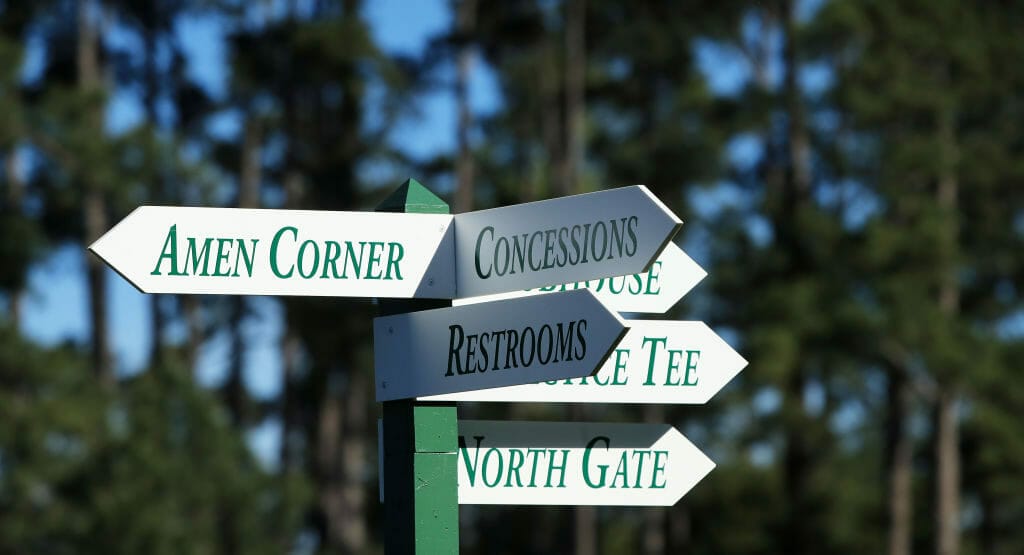- Rose Blossoms in LegoLand
- Few will ever forget the-then 17-year-old Englishman Justin Rose taking part in his first ever Open Championship at Royal Birkdale back in 1998, when he famously holed-out from distance in the rough on 18 to finish in fourth place and win the coveted Silver Medal as the highest finishing amateur in the field.
- 19-years-later, ahead of the now 36-year-old returning to the Open back at Birkdale in 2017, his epic birdie shot had been immortalized in an animated Lego video scene, complete with the two giant bunkers Rose – still dressed in an oversized maroon sweater and grey golf cap – had to fly his ball over to reach the putting surface before his ball famously ran towards and into the 18th
- Rose commented, “When your final shot is made into a Lego scene, as it was, by somebody very creative, that was the moment when you can show your children and now it’s a Lego scene, that’s how you know it was a cool achievement.
- Another great golfing moment commemorated by the world-famous Danish plastic toy maker was the iconic putt by Spanish star Seve Ballesteros to win the 1984 Open Championship at St Andrews.
- Amen to That
- The infamous run of three of holes at Augusta National, the 11th, 12th and 13th holes where the traditional opening ‘Major’ of the season, The Masters is often said to be won and lost has, in fact, absolutely no religious connotations, despite the almost ecclesiastic reverence accorded to the most exclusive golf club in the USA and the annual springtime pilgrimage to The Masters.
- The term ‘Amen Corner’ was in fact coined by legendary American golf writer Herbert Warren Wind, who, back in 1958 when searching for an appropriate description for the collective, ‘Holy Trinity’ of iconic golf holes subsequently revealed that the epithet originated from the title of his favourite jazz album called ‘Shouting in that Amen Corner,’ and not only did it resonate, but it also stuck and has become both revered and clichéd in the 62-years since it was first contrived.
- Keeping the Bogey Man at Bay
- Most of us recreational golfers are more than happy to string a few bogey-free holes together during a round of golf, four, six, maybe even the occasional nine holes without a red stain on our scorecard.
- But it’s a different world in the paid ranks; the longest known bogey-free streak of holes in professional golf history is that of Korean LPGA star Jin Young Ko on the LPGA Tour, who accumulated a run of 113 bogey-free holes between the AIG Women’s British Open, the 2019 Canadian Pacific Women’s Open (which she won) and the first eight holes of the Cambia Portland Classic.
- For his part, Tiger Woods played 110 bogey-free holes without a bogey, starting with the fourth hole of the 2000 Bell Canadian Open, through the fifth hole of the third round of the 2000 National Car Rental Classic at Lake Buena Vista in Florida, the longest bogey-free anyone can recall in the men’s game.
- Money, Money, Money
- The most valuable prize at any individual golf tournament to date in the US$15m picked-up by Rory McIlroy, when he earned US$5m for winning the 2019 PGA TOUR Championship and a further 200% bonus on top, his victory in the 2018 – 2019 season-ending event also earning the Irishman a US$10m bonus for finishing top of the FedEx Cup, nice work if you can get it?
- But the most valuable tournament is the Players Championship on the PGA TOUR, which offers a US$15m prize fund, US$3m more than the US Open. US$2.7m goes to the winner of the Players Championship, but that first prize is less than the US$3m earned by Spaniard John Rahm when he won the DP World Tour Championship in Dubai last year.
- Meanwhile, women’s pro golf is proportionately underpaid; theS. Women’s Open offers the most generous prize purse – US$5.5 million – with US$1,000,000 being won by the champion, US$1.25m less than the winner of the men’s US Open.
- Slow, Slow, Quick, Quick Slow
- Whist most of us recreational golfers can complete a Sunday morning four-ball in a touch under or over the three-hour mark, slow play has become a scourge in the professional game, with notoriously slow-coach players known to take over five-hours to complete a two-ball round.
- But the ladies are no better, and on occasions, even worse; three-ball weekend rounds at the 2019 Evian Masters were taking up to 5hrs, 50mins and in admittedly inclement weather at the notoriously difficult Carnoustie Links, several four-balls were taking between six and seven hours to complete.
- But even the main professional circuits can’t agree on what constitutes slow play; the European Tour allows 40-seconds per shot, 10-seconds more for the first man to play, whilst the PGA TOUR will tolerate up to 60-seconds per shot, even up to two-minutes in extenuating circumstances.
- Lost Cause
- Still on the thorny subject of pace of play – and this rule applies to both amateurs and professionals alike, according to the USGA and the R&A, a player has a maximum of three-minutes to search for a lost ball, after which time it must be declared, ‘Lost.
- This includes a reasonable time to get to the ball if the player is not where the ball is found, whilst the penalty for a lost ball is one-stroke plus distance.
- The time permitted to search for a lost ball used to be five minutes, but this was reduced to three in order to help improve the pace of play; the appropriate provisions in Rule 18.2a and Rule 7.1 state, ‘You are allowed to take reasonable actions to find and identify your ball,” but, ‘If the improvement results from actions that exceeded what was reasonable for a fair search, the general penalty is applied.”
- Better Late Than Never
- According to both the R&A and the USGA, Rule 6-3a states that, ‘If a player arrives at his / her starting time within five minutes of their published tee time, the penalty for failure to start on time is two strokes, applied at the first hole in stroke play.
- In 2011 Dustin Johnson was penalised two strokes for being late to tee off.at the start of his first round at the Genesis Invitational and the following year, at the Tournament of Champions, Rory Sabbatini missed his start time by a mere 20-seconds and also received a two-stroke penalty for his mistake.
- But, be warned, miss your allotted tee time by more than five-minutes and there’s no room for maneuver, it’s the BIG ‘DQ,’ disqualified, no excuses, no exceptions.
- Penalty Kicks
- The Rules of Golf are littered with penalties for this and punishments for that, but spare a thought for LPGA player Lee Ann Walker, who fell foul on a new rule aimed at speeding-up play to amass a remarkable 58 penalty strokes during the first two rounds of the LPGA Senior Championship in the USA last year.
- Ms Walker, who plays infrequently on the pro circuit these days incurred a remarkable 42 penalty strokes in her first round of 127, followed by a further 18 in round two, an aggregate of 219, missing the cut by a remarkable 59 shots.
- The penalty strokes were applied retrospectively after it was discovered she had repeatedly violated Rule 10.2b – which had been implemented at the start of the 2019 season – prohibiting caddies from lining up golfers’ shots on the greens and other locations on the course.



























Leave a comment